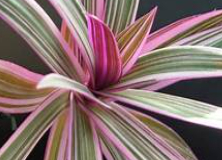Biological Resource of Family Commelinaceae in Maha Sarakham Province: Diversity, Traditional Uses and Conservation Status
http://www.doi.org/10.26538/tjnpr/v7i10.9
Keywords:
Maha Sarakham Province, Commelinaceae, Conservation status, Utilisation, DiversityAbstract
The Family Commelinaceae is considered one of the largest families in the plant kingdom, comprising 41 genera and 731 species. The biodiversity in Maha Sarakham Province plays a significant role in the daily lives of its inhabitants. It’s used as local food, vegetables, medicinal and ornamental plants, rituals, natural dyes, traditional cosmetics, and construction materials. This study aimed to determine Commelinaceae’s diversity, conservation status and traditional uses in Maha Sarakham Province, northeastern Thailand. Seven genera with 26 species of Commelinaceae were collected between January and December 2021 in field surveys. The genus diversity was Murdannia (7 species), Cyanoyis and Tradescantea (5 species each), Commelina (4 species), Callisia (3 species), Amischotolype and Floscopa (1 species each). Callisia repens, Callisia fragrans, and Tradescantia spathacea are popular ornamental species with varied leaf colour. Commelinaceae is significantly distributed in the Kantharawichai District in four ecosystems: deciduous dipterocarp forest (13 species), mixed deciduous forest (4 species), river basin (5 species) and 11 species in home gardens. This study reported 15 native (57.69%) and 11 cultivated species (42.31%) grouped into non-common species (50%) and common species (50%). The phenology is presented from June to September. The conservation status of five species is Least Concern (LC). The study revealed that 16 species from the research area are used for food, ornamental (9 species), rituals (1 species), medicine (4 species), and other purposes (8 species). This study provides important biological resource data on Commelinaceae; to our knowledge, this is the first biodiversity survey of the family.
References
Inta A, Trisonthi P, Trisonthi C. Analysis of traditional knowledge in medicinal plants used by Yuan in Thailand. J Ethnopharmacol. 2013; 149: 344-354. DOI: 10.1016/j.jep.2013.06.047.
Khuankaew S, Srithi K, Tiansawat P, Jampeetong A, Inta A, Wangpakapattanawong P. Ethnobotanical study of medicinal plants used by Tai Yai in Northern Thailand. J Ethnopharmacol. 2014; 151 (2): 829-838. DOI: 10.1016/j.jep.2013.11.033.
Cruz-Garcia GS, Struik PC, Johnson DE. Wild harvest: distribution and diversity of wild food plants in rice ecosystems of Northeast Thailand. NJAS - Wageningen J Life Sci. 2016; 78: 1-11. DOI: 10.1016/j.njas.2015.12.0030.
Panyadee P, Balslev H, Wangpakapattanawong P. Woody plant diversity in urban home gardens in Northern Thailand. Econ Bot. 2016; 70 (3): 285-302. DOI: 10.1007/s12231-016-9348-9
Saensouk S, Saensouk P, Pasorn P, Chantaranothai P. Diversity, Traditional Uses and New Record of Zingiberaceae in Nam Nao National Park, Petchabun Province, Thailand. Agr. Nat. Resour. 2016; 50: 445-453.https://doi.org/10.1016/j.anres.2016.08.002
Pholhiamhan R, Saensouk S, Saensouk P. Ethnobotany of Phu Thai ethnic group in Nakhon Phanom Province, Thailand. Walailak J Sci Technol. 2018; 15 (10): 679-699. DOI: 10.48048/wjst.2018.3737
Phumthum M, Balslev H. Using ICPC-2 standard to identify Thai Zingiberaceae of pharmacological interest. Plants. 2020; 9(7): 906. DOI:10.3390/plants9070906.
Junsongduang A, Sirithip K, Inta A, Nachai R, Onputtha B, Tanming W, Balslev H. Diversity and Traditional Knowledge of Textile Dyeing Plants in Northeastern Thailand. Econ Bot. 2017; 71(3): 241-255. DOI 10.1007/s12231-017-9390-2
Junsongduang A, Kasemwan W, Lumjoomjung S, Sabprachai W, Tanming W, Balslev H. Ethnomedicinal knowledge of traditional healers in Roi Et, Thailand. Plants. 2020; 9 (9): 1177. DOI: 10.3390/plants9091177
Punchay K, Inta A, Tiansawat P, Balslev H, Wangpakapattanawong P. Traditional knowledge of wild food plants of Thai Karen and Lawa (Thailand). Genet Resour Crop Evol. 2020; 67 (5): 1277-1299. DOI: 1007/s10722-020-00910-x.
Saensouk P, Saensouk S. Karyological Study of Four Species in Callisia and Cyanotis (Commelinaceae) from Thailand. Cytologia. 2021; 86(4): 339-343.
Phatlamphu N, Saensouk S, Saensouk P, Jungsongduang A. Ethnobotany of edible plants in Muang District, Kalasin Province, Thailand. Biodiversitas. 2021, 22 (12): 5432-5444. DOI: 10.13057/biodiv/d221225.
Ragsasilp A, Saensouk P, Saensouk S. Ginger family from Bueng Kan Province, Thailand: Diversity, conservation status, and traditional uses. Biodiversitas. 2022; 23: 2739-2752. https://doi.org/10.13057/biodiv/d230556
Saisor N, Prathepha P, Saensouk S. Ethnobotanical study and utilisation of plants in Khok Nhong Phok forest, Kosum Phisai District, Northeastern Thailand. Biodiversitas. 2021; 22 (10): 4336-4348. DOI: 10.13057/biodiv/d221026.
Numpulsuksant W, Saensouk S, Saensouk, P. Diversity and ethnobotanical study of medicinal plants in Ban Hua Kua, Kae Dam District, Thailand. Biodiversitas. 2021; 22 (10): 4349-4357. DOI: 10.13057/biodiv/d221027.
Saensouk P, Saensouk S. Karyological Study of Four Genera and Seven Species (Commelinaceae) in Thailand. Cytologia. 2022; 87(1): 41-47.
Christenhusz MJM, Byng JW. The number of known plants species in the world and its annual increase. Phytotaxa. 2016; 261: 201–217.
Kew Science. World Checklist of Selected Plant Families (WCSP). 2022; http://apps.kew.org/wcsp/
Nandikar MD, Gurav RV. Additions to the family Commelinaceae in flora of India. J. Asia-Pac. Biodiv. 2019; 12: 333–340.
Thitimetharoch T, Chantaranothai P, Faden RB. On Progress of Thai Commelinaceae. In: Clark, R., Wearn, J. And Simpson, D. A. (eds.). Thai For Bull (Bot.). 2014; Office of National Buddishm Press. Bangkok.
Chumroenphat T, Saensouk S. Amino acid, bioactive compounds and biological activities of ten species from family Commelinaceae in Thailand. Not Bot Horti Agrobo. 2021; 49(3): 12391. https://doi.org/10.15835/nbha49311924
Saensouk S, Saensouk P. A Karyological Study of Six Commelinaceae Species from Thailand. Cytologia. 2020; 85(1): 57-62.
IUCN. The IUCN Red List of Threatened Species. Version 2022-1. 2022; https://www.iucnredlist.org
Maha Sarakham Province. 2021; https://www.google.com/maps/place/ Maha Sarakham
El Brahimi R, El Barnossi A, Amrani M, Bari A. Ethnobotanical Study and Biodiversity of Medicinal Plants Used in the Province of Taza Northeastern Morocco. Trop J Nat Prod Res. 2022; 6(11): 1814-1831. http://www.doi.org/10.26538/tjnpr/v6i11.12

Published
How to Cite
Issue
Section
License
Copyright (c) 2023 Tropical Journal of Natural Product Research (TJNPR)

This work is licensed under a Creative Commons Attribution-NonCommercial-NoDerivatives 4.0 International License.


















